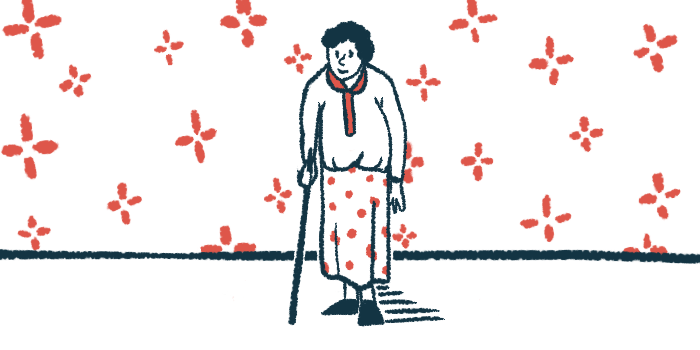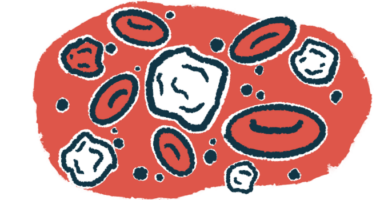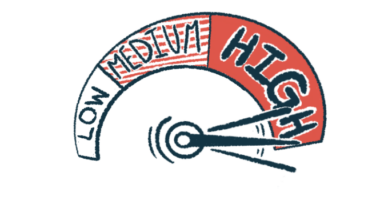Immunosuppressives aid survival in late ANCA-associated vasculitis
Researchers compared outcomes in older-onset MPA, GPA patients

People diagnosed with ANCA-associated vasculitis (AAV) at age 75 or older may show more inflammation, higher rates of kidney involvement, or higher mortality than younger-onset patients based on their AAV type, a study in Japan finds.
But immunosuppressive treatment plus standard corticosteroids appears to be more effective than corticosteroids alone at prolonging the life of patients, even those with older-onset AAV. The data suggest “immunosuppressive therapies can be beneficial for improving the prognosis of AAV even in older onset,” the researchers wrote.
The study, “Comparison of Outcomes Between Japanese Patients With Older-Onset Granulomatosis With Polyangiitis/Microscopic Polyangiitis and Younger-Onset Patients in Daily Clinical Practice: A Two-Center Retrospective Study in Japan,” was published in the International Journal of Rheumatic Diseases.
AAV occurs when self-reactive antibodies prompt the immune system to attack small blood vessels, leading to inflammation that can damage organs such as the kidneys and the lungs. Over time, the damage can accumulate and become permanent, increasing the risk of death.
“Previous studies have shown that patients with older-onset AAV (age [of at least] 75) had poorer outcomes because of AAV itself or complications than patients with younger-onset AAV,” the researchers wrote.
Outcomes in older-onset MPA, GPA
No study to date has compared the clinical features and outcomes of people with older-onset microscopic polyangiitis (MPA) and granulomatosis with polyangiitis (GPA), the two most common types of AAV, however. Here, researchers in Japan compared data from 44 MPA patients and 26 GPA patients followed at two Japanese centers for a mean of 38.4 months.
Just over two-thirds (67.1%) were diagnosed before age 75 (29 with MPA, 18 with GPA), and the remaining 32.9% were diagnosed at age 75 or older (15 with MPA, eight with GPA).
Symptoms and organ involvement were generally similar between older and younger GPA patients. However, older MPA patients were significantly more likely to have kidney involvement (93.3% vs. 62.1%) and fever (60% vs. 27.6%) than younger ones, suggesting a more severe disease. People with older-onset GPA showed significantly higher — by about two times — blood C-reactive protein levels and erythrocyte sedimentation rate than younger patients. Both are markers of inflammation.
Despite similar disease activity — measured using the Birmingham Vasculitis Activity Score — doctors tended to prescribe lower oral doses of the corticosteroid prednisolone to older MPA and GPA patients. About half of all patients also received high-dose prednisolone into a vein, that is, intravenously, at some point during therapy.
The use of rituximab, an immunosuppressive therapy approved for MPA and GPA in combination with corticosteroids, was similar across groups. Rituximab is marketed as Rituxan in the U.S., Canada, and Japan, and as MabThera elsewhere, with biosimilar versions available.
The use of other immunosuppressive treatments, including tacrolimus, cyclosporin A, and azathioprine, was also similar across groups. The exception was cyclophosphamide, which was used significantly less frequently in older MPA patients than younger ones (6.7% vs. 37.9%). No significant differences were seen in the GPA group.
Immunosuppressives linked to longer survival
After three years, the proportion who remained alive tended to be lower among older patients. In MPA, there was a significantly lower proportion of older patients surviving at a year than younger ones (72.2% vs. 95.2%). The only death in the GPA group was a younger person.
“Older patients with GPA/MPA may have specific clinical features,” the researchers wrote, adding that because those with MPA may have poorer survival than their younger counterparts, “careful observation is needed during the treatment of older patients with MPA.”
Using immunosuppressive treatments was linked to longer survival regardless of age, with a significantly higher proportion of all patients surviving at one year over those on corticosteroids alone (97.2% vs. 77.2%). This difference was even more pronounced (100% vs. 59.7%) among older patients.
“Immunosuppressive therapy including cyclophosphamide, rituximab, and other immunosuppressive agents was important to sustain the survival of patients with GPA/MPA,” the researchers wrote. “This study highlights the clinical features of older patients with GPA/MPA and differences in outcomes in daily clinical practice, which would be beneficial for predicting the prognosis or considering treatment strategies in older patients with AAV.”
The researchers did note that the study included fewer newly diagnosed patients and that larger studies are needed to confirm their findings.







